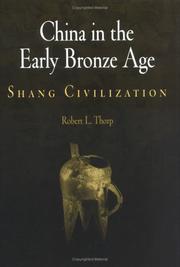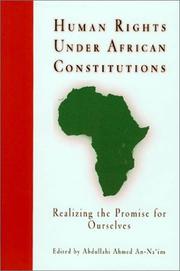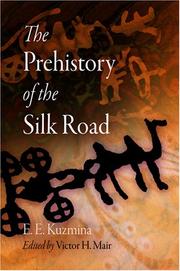| Listing 1 - 10 of 66 | << page >> |
Sort by
|
Periodical
Abstract | Keywords | Export | Availability | Bookmark
 Loading...
Loading...Choose an application
- Reference Manager
- EndNote
- RefWorks (Direct export to RefWorks)
Social Sciences --- Anthropology --- Middle East --- anthropology --- middle eastern studies
Periodical
ISSN: 2196629X
Abstract | Keywords | Export | Availability | Bookmark
 Loading...
Loading...Choose an application
- Reference Manager
- EndNote
- RefWorks (Direct export to RefWorks)
Middle East specialists. --- Middle East --- Middle East. --- Study and teaching --- Middle Eastern Studies --- Middle East --- North Africa --- humanities --- social sciences --- middle eastern studies --- middle east --- north africa

ISBN: 0812239105 1322511209 0812203615 9780812239102 Year: 2006 Publisher: Philadelphie University of Pennsylvania Press
Abstract | Keywords | Export | Availability | Bookmark
 Loading...
Loading...Choose an application
- Reference Manager
- EndNote
- RefWorks (Direct export to RefWorks)
One of the great breakthroughs in Chinese studies in the early twentieth century was the archaeological identification of the earliest, fully historical dynasty of kings, the Shang (ca. 1300-1050 B.C.E.). The last fifty years have seen major advances in all areas of Chinese archaeology, but recent studies of the Shang, their ancestors, and their contemporaries have been especially rich. Since the last English-language overview of Shang civilization appeared in 1980, the pace of discovery has quickened. China in the Early Bronze Age: Shang Civilization is the first work in twenty-five years to synthesize current knowledge of the Shang for everyone interested in the origins of Chinese civilization. China in the Early Bronze Age traces the development of early Bronze Age cultures in North and Northwestern China from about 2000 B.C.E., including the Erlitou culture (often identified with the Xia) and the Erligang culture. Robert L. Thorp introduces major sites, their architectural remains, burials, and material culture, with special attention to jades and bronze. He reviews the many discoveries near Anyang, site of two capitals of the Shang kings. In addition to the topography of these sites, Thorp discusses elite crafts and devotes a chapter to the Shang cult, its divination practices, and its rituals. The volume concludes with a survey of the late Shang world, cultures contemporary with Anyang during the late second millennium B.C.E. Fully documented with references to Chinese archaeological sources and illustrated with more than one hundred line drawings, China in the Early Bronze Age also includes informative sidebars on related topics and suggested readings. Students of the history and archaeology of early civilizations will find China in the Early Bronze Age the most up-to-date and wide-ranging introduction to its topic now in print. Scholars in Chinese studies will use this work as a handbook and research guide. This volume makes fascinating reading for anyone interested in the formative stages of Chinese culture.
China --- History --- Feudalism --- African Studies. --- Ancient Studies. --- Archaeology. --- Asian Studies. --- Middle Eastern Studies.
Book
ISBN: 1934536628 Year: 2013 Publisher: Philadelphia : University of Pennsylvania Museum of Archaeology and Anthropology,
Abstract | Keywords | Export | Availability | Bookmark
 Loading...
Loading...Choose an application
- Reference Manager
- EndNote
- RefWorks (Direct export to RefWorks)
Hasanlu V provides archaeologists with a new, more accurate chronology of Hasanlu, the largest and arguably the most important archaeological site in the Gadar River Valley of northwestern Iran. This revised chronology introduces Hasanlu Periods VIa, V, and IVc for the first time. Based on new findings, the report overturns current constructions of the origins of the archaeological culture in Hasanlu, which sought to link the Monochrome Burnished Ware Horizon (formerly known as the Early Western Grey Ware Horizon) to the migration of new peoples into western Iran in the later second millennium B.C. Hasanlu V shows instead that the Monochrome Burnished Ware Horizon developed gradually from indigenous traditions. This reappraisal has important implications for our understanding of Indo-Iranian migrations into the Zagros region.University Museum Monograph, 137
Excavations (Archaeology) --- Hasanlu Site (Iran) --- Iran --- Historiography. --- Antiquities. --- African Studies. --- Archaeology. --- Asian Studies. --- Middle Eastern Studies.
Book
ISBN: 1283890070 0812201051 0812221397 Year: 2011 Publisher: Philadelphia : University of Pennsylvania Press,
Abstract | Keywords | Export | Availability | Bookmark
 Loading...
Loading...Choose an application
- Reference Manager
- EndNote
- RefWorks (Direct export to RefWorks)
Selected by Choice magazine as an Outstanding Academic TitleAre the principles set forth in the Universal Declaration of Human Rights truly universal? Or, as some have argued, are they derived exclusively from Western philosophic traditions and therefore irrelevant to many non-Western cultures? Should a state's claims to indigenous traditions, and not international covenants, determine the scope of rights granted to its citizens?In his strong defense of the Declaration, Reza Afshari contends that the moral vision embodied in this and other agreements is a proper response to the abuses of the modern state. Asserting that the most serious violations of human rights by state rulers are motivated by political and economic factors rather than the purported concern for cultural authenticity, Afshari examines one particular state that has claimed cultural exception to the universality of human rights, the Islamic Republic of Iran.In his revealing case study, Afshari investigates how Islamic culture and Iranian politics since the fall of the Shah have affected human rights policy in that state. He exposes the human rights violations committed by ruling clerics in Iran since the Revolution, showing that Iran has behaved remarkably like other authoritarian governments in its human rights abuses. For more than two decades, Iran has systematically jailed, tortured, and executed dissidents without due process of law and assassinated political opponents outside state borders. Furthermore, like other oppressive states, Iran has regularly denied and countered the charges made by United Nations human rights monitors, defending its acts as authentic cultural practices. Throughout his study, Afshari addresses Iran's claims of cultural relativism, a controversial thesis in the intense ongoing debate over the universality of human rights. In prison memoirs he uncovers the actual human rights abuses committed by the Islamic Republic and the sociopolitical conditions that cause or permit them. Finally, Afshari turns to little-read UN reports that reveal that the dynamics of power between UN human rights monitors and Iranian leaders have proven ineffective at enforcing human rights policy in Iran. Critically analyzing the state's responses, Afshari shows that the Islamic Republic, like other oppressive states, has regularly denied and countered the charges made by UN human rights monitors, and when denials were patently implausible, it defended its acts as authentic cultural practices. This defense is equally unconvincing, since it lacked domestic cultural consensus.
Human Rights --- POLITICAL SCIENCE --- Law, Politics & Government --- African Studies. --- Asian Studies. --- Human Rights. --- Law. --- Middle Eastern Studies. --- Political Science.

ISBN: 0812236777 0812201108 Year: 2013 Publisher: Philadelphia : University of Pennsylvania Press,
Abstract | Keywords | Export | Availability | Bookmark
 Loading...
Loading...Choose an application
- Reference Manager
- EndNote
- RefWorks (Direct export to RefWorks)
Some of the most massive and persistent violations of human rights occur in African nations. In Human Rights Under African Constitutions: Realizing the Promise for Ourselves, scholars from a wide range of fields present a sober, systematic assessment of the prospects for legal protection of human rights in Africa. In a series of detailed and highly contextual studies of Ethiopia, Ghana, Guinea, Morocco, Mozambique, Nigeria, Rwanda, Senegal, South Africa, Sudan, and Uganda, experts seek to balance the socioeconomic and political diversity of these nations while using the same theoretical framework of legal analysis for each case study.Standards for human rights protection can be realized only through direct and strong support from a nation's legal and political institutions. The contributors to this volume uniformly conclude that a well-informed and motivated citizenry is the most powerful force for creating the political will necessary to effect change at the national level. In addition to a critical evaluation of the current state of human rights protection in each of these African nations, the contributors outline existing national resources available for protecting human rights and provide recommendations for more effective and practical use of these resources.
Human rights --- Rule of law --- Africa --- Politics and government. --- Supremacy of law --- Administrative law --- Constitutional law --- African Studies. --- Asian Studies. --- Human Rights. --- Law. --- Middle Eastern Studies. --- Political Science.
Book
ISBN: 0812296184 081225130X Year: 2019 Publisher: Philadelphia : University of Pennsylvania Press,
Abstract | Keywords | Export | Availability | Bookmark
 Loading...
Loading...Choose an application
- Reference Manager
- EndNote
- RefWorks (Direct export to RefWorks)
Before the Arabs conquered northwest Africa in the seventh century, Ramzi Rouighi asserts, there were no Berbers. There were Moors (Mauri), Mauretanians, Africans, and many tribes and tribal federations such as the Leuathae or Musulami; and before the Arabs, no one thought that these groups shared a common ancestry, culture, or language. Certainly, there were groups considered barbarians by the Romans, but "Barbarian," or its cognate, "Berber" was not an ethnonym, nor was it exclusive to North Africa. Yet today, it is common to see studies of the Christianization or Romanization of the Berbers, or of their resistance to foreign conquerors like the Carthaginians, Vandals, or Arabs. Archaeologists and linguists routinely describe proto-Berber groups and languages in even more ancient times, while biologists look for Berber DNA markers that go back thousands of years. Taking the pervasiveness of such anachronisms as a point of departure, Inventing the Berbers examines the emergence of the Berbers as a distinct category in early Arabic texts and probes the ways in which later Arabic sources, shaped by contemporary events, imagined the Berbers as a people and the Maghrib as their home.Key both to Rouighi's understanding of the medieval phenomenon of the "berberization" of North Africa and its reverberations in the modern world is the Kitāb al-'ibar of Ibn Khaldūn (d. 1406), the third book of which purports to provide the history of the Berbers and the dynasties that ruled in the Maghrib. As translated into French in 1858, Rouighi argues, the book served to establish a racialized conception of Berber indigenousness for the French colonial powers who erected a fundamental opposition between the two groups thought to constitute the native populations of North Africa, Arabs and Berbers. Inventing the Berbers thus demonstrates the ways in which the nineteenth-century interpretation of a medieval text has not only served as the basis for modern historical scholarship but also has had an effect on colonial and postcolonial policies and communal identities throughout Europe and North Africa.
Berbers --- Amazigh --- Imazighan --- Imazighen --- Mazigh --- North Africans --- Historiography. --- History --- History. --- African Studies. --- Asian Studies. --- European History. --- Medieval and Renaissance Studies. --- Middle Eastern Studies. --- World History. --- Africa, North
Book
ISBN: 1283890763 0812202252 Year: 2008 Publisher: Philadelphia, PA : University of Pennsylvania Press,
Abstract | Keywords | Export | Availability | Bookmark
 Loading...
Loading...Choose an application
- Reference Manager
- EndNote
- RefWorks (Direct export to RefWorks)
Anthropologist Sandya Hewamanne spent time in a Sri Lankan free trade zone (FTZ) working and living among the workers to learn about their lives. "They were poor women from rural areas," Hewamanne writes, "who migrated to do garment work in transnational factories of a global assembly line. Their difficult work routines and sad living conditions have been examined in detail. When I was with them I often wondered whether anyone noticed the smiles, winks, smirks, gestures, tones of voice, the movies they saw, or the songs they sang." Hewamanne deftly weaves theories of identity, globalization, and cultural politics throughout her detailed accounts of the workers' efforts to negotiate ever shifting roles and expectations of gender, class, and sexuality.By analyzing how these workers claim political subjectivity, Hewamanne's Stitching Identities in a Free Trade Zone challenges conventional notions about women at the bottom of the global economy. The book offers a fascinating journey through the vibrant subaltern universe of Sri Lankan female migrant workers, from the FTZ factory shop floor to boarding houses, from urban movie theaters to temples and beaches and back to their native rural villages. Stitching Identities in a Free Trade Zone captures the spirit with which women confront power and violence through everyday poetics and politics, exploring how female workers construct themselves as different while investigating this difference as the space where deep anxieties and ambivalences over notions of nation, modernity, and globalization get played out.
Women migrant labor --- Women --- Sex role --- Free trade --- Social conditions. --- Economic conditions. --- African Studies. --- Anthropology. --- Asian Studies. --- Folklore. --- Gender Studies. --- Linguistics. --- Middle Eastern Studies.
Book
ISBN: 3839450489 3837650480 Year: 2020 Publisher: Bielefeld transcript Verlag
Abstract | Keywords | Export | Availability | Bookmark
 Loading...
Loading...Choose an application
- Reference Manager
- EndNote
- RefWorks (Direct export to RefWorks)
This book explores the formative correlations and inventive transmissions of Anglophone Arab representations ranging from early 20th century Mahjar writings to contemporary transnational Palestinian resistance art. Tracing multiple beginnings and seminal intertexts, the comparative study of dissonant truth-making presents critical readings in which the notion of cross-cultural translation gets displaced and strategic unreliability, representational opacity, or matters of act advance to essential qualities of the discussed works' aesthetic devices and ethical concerns. Questioning conventional interpretive approaches, Markus Schmitz shows what Anglophone Arab studies are and what they can become from a radically decentered relational point of view. Among the writers and artists discussed are such diverse figures as Rabih Alameddine, William Blatty, Kahlil Gibran, Ihab Hassan, Jabra Ibrahim Jabra, Emily Jacir, Walid Raad, Ameen Rihani, Edward Said, Larissa Sansour, and Raja Shehadeh.
American Studies. --- British Studies. --- Critical Correlation. --- Cross-cultural (Mis-)Translation. --- Cultural Studies. --- Culture. --- Islam. --- Literary Studies. --- Literature. --- Middle Eastern Studies. --- Postcolonialism. --- Strategic Lies. --- SOCIAL SCIENCE / Popular Culture. --- Anglophone Arab Literatures and Arts; Cross-cultural (Mis-)Translation; Critical Correlation; Strategic Lies; Culture; Islam; Literature; Cultural Studies; Postcolonialism; American Studies; Literary Studies; British Studies; Middle Eastern Studies

ISBN: 9780812240412 0812240413 1336015160 0812292332 Year: 2008 Publisher: Philadelphia University of Pennsylvania Press
Abstract | Keywords | Export | Availability | Bookmark
 Loading...
Loading...Choose an application
- Reference Manager
- EndNote
- RefWorks (Direct export to RefWorks)
In ancient and medieval times, the Silk Road was of great importance to the transport of peoples, goods, and ideas between the East and the West. A vast network of trade routes, it connected the diverse geographies and populations of China, the Eurasian Steppe, Central Asia, India, Western Asia, and Europe. Although its main use was for importing silk from China, traders moving in the opposite direction carried to China jewelry, glassware, and other exotic goods from the Mediterranean, jade from Khotan, and horses and furs from the nomads of the Steppe. In both directions, technology and ideologies were transmitted. The Silk Road brought together the achievements of the different peoples of Eurasia to advance the Old World as a whole.The majority of the Silk Road routes passed through the Eurasian Steppe, whose nomadic people were participants and mediators in its economic and cultural exchanges. Until now, the origins of these routes and relationships have not been examined in great detail. In The Prehistory of the Silk Road, E. E. Kuzmina, renowned Russian archaeologist, looks at the history of this crucial area before the formal establishment of Silk Road trade and diplomacy. From the late Neolithic period to the early Bronze Age, Kuzmina traces the evolution of the material culture of the Steppe and the contact between civilizations that proved critical to the development of the widespread trade that would follow, including nomadic migrations, the domestication and use of the horse and the camel, and the spread of wheeled transport.The Prehistory of the Silk Road combines detailed research in archaeology with evidence from physical anthropology, linguistics, and other fields, incorporating both primary and secondary sources from a range of languages, including a vast accumulation of Russian-language scholarship largely untapped in the West. The book is complemented by an extensive bibliography that will be of great use to scholars.
S17/0211 --- S17/0550 --- China: Art and archaeology--Archaeology: Prehistory --- China: Art and archaeology--Silk route --- Bronze age --- Asia, Central --- Silk Road --- Antiquities. --- Civilization --- Silk Route --- African Studies. --- Anthropology. --- Archaeology. --- Asian Studies. --- Folklore. --- Linguistics. --- Middle Eastern Studies.
| Listing 1 - 10 of 66 | << page >> |
Sort by
|

 Search
Search Feedback
Feedback About UniCat
About UniCat  Help
Help News
News